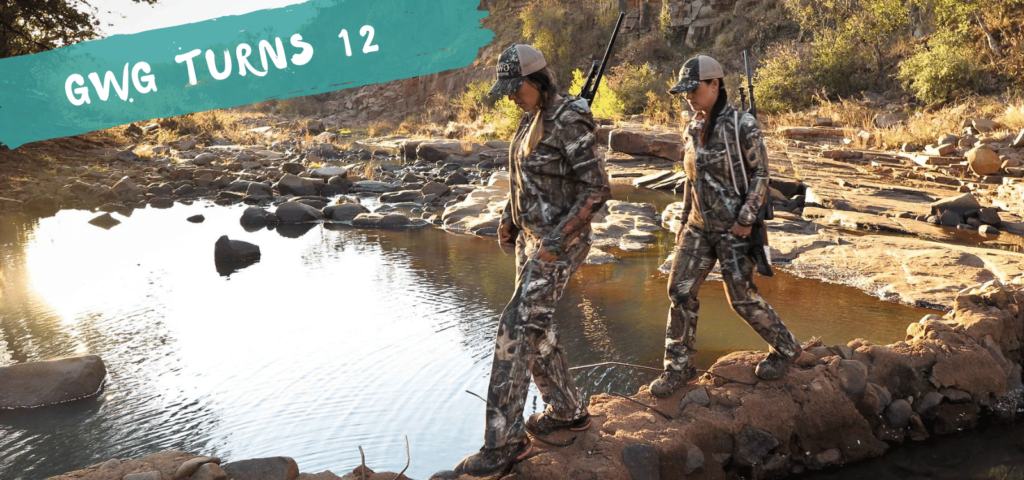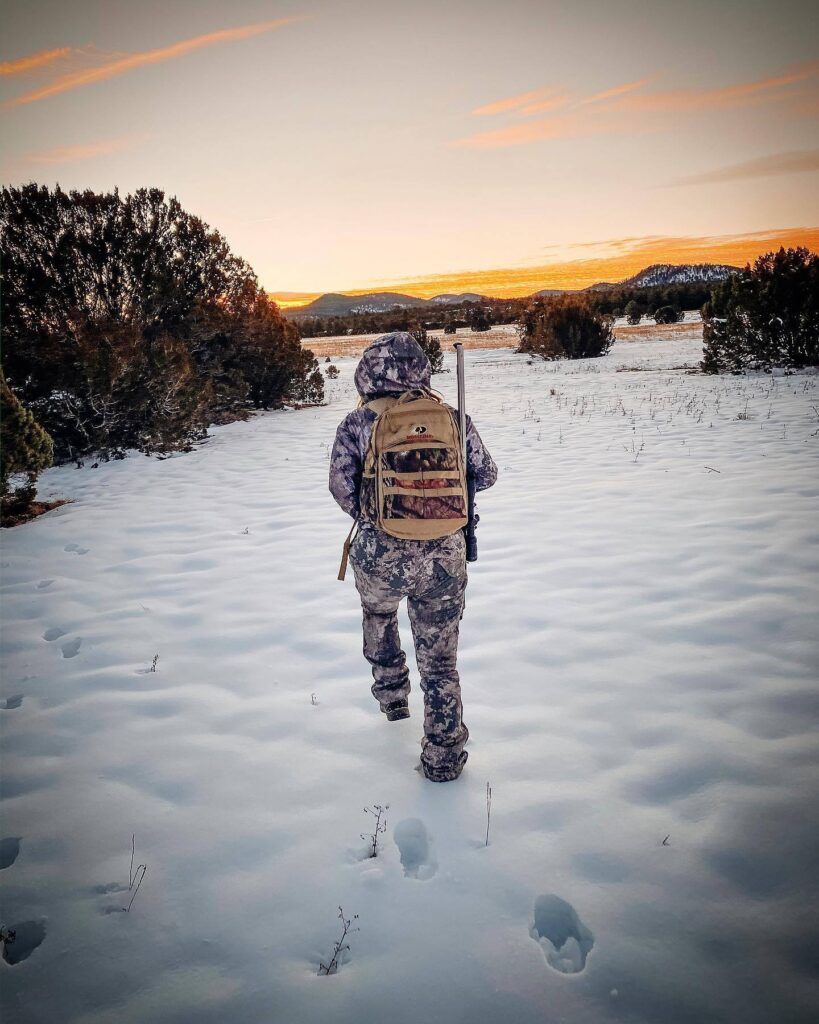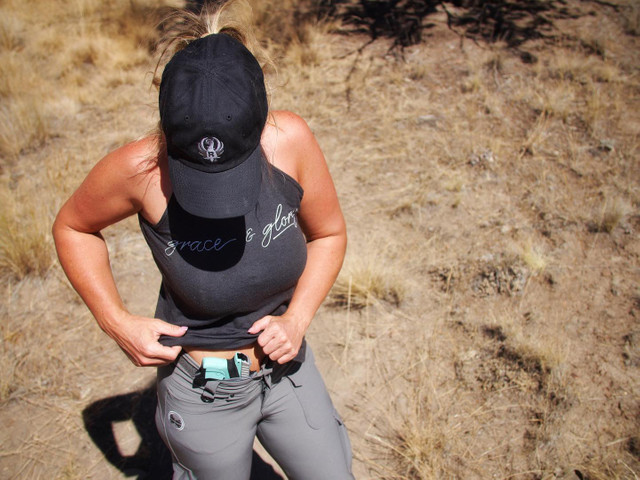How To Clean A European Mount
By Annalise Castle | GWG Ambassador
There is nothing that compares to that time spent in the outdoors. So, what’s a better way to remember a hunt and honor the wildlife you have harvested than proudly displaying that animal in your home. A European skull mount (euro mount) is such a cool way to do that! If you have never cleaned your own skull and always wanted to or if you do it all the time, I hope this helps you out and gives you some extra tips. **Disclaimer: I am not a professional taxidermist; I just really enjoy cleaning wildlife skulls. This is the method I use/what works for me, and hopefully, it’ll help you too. This method also works the same for cap mounts and any other wildlife skull you want to clean. [/vc_column_text][/vc_column][/vc_row][vc_row][vc_column][vc_single_image image=”43261″ img_size=”large” alignment=”center”][/vc_column][/vc_row][vc_row][vc_column][vc_column_text]
WHAT YOU’LL NEED:
> Burner: I use a portable one that you can use for boiling turkeys
> Propane Tank
> Cooking Pot: Get a pot that is deep enough to fit a deer skull
> Dish Soap: Dawn soap works best to cut the oil/grease. Fun fact: Sunlight soap works great for getting blood off of hides
> Long tongs: To get the lower jaw or smaller skulls out of the boiling pot
> Nitrile gloves: I use these throughout the whole process
> Knife
> Tweezers: A larger and smaller set of utility or surgical tweezers
> Wire: A good-sized piece of coat hanger works well
> Stiff Bristle Brush: Not a wire or metal brush, as that could scratch the skull
> Garbage Bag(s)
> Vaseline or Plastic Wrap with Tape or Tinfoil
> Paper Towel
> Container or Small Tub: One that is deep enough to lay the skull in to submerge it in liquid hydrogen peroxide, if that’s the whitening process you choose. The container can also serve as a place for you to rest the skulls you have wrapped in the hydrogen peroxide cream.
> Hydrogen peroxide: I use the liquid version (you can pick it up at a dollar store) to submerge the skulls in. I use roughly 22-25 of the 500ml bottles with the container (an old baking pan) that I use. Or you can use hydrogen peroxide cream (30-40 volume that salons use) to wrap the skull in. **Never use bleach on a skull. Bleach keeps working on the skull over time and will eventually break down the skull. Another way to whiten a skull is with good old sunlight. It’s a natural method, but will obviously take longer to whiten.
*OPTIONAL ITEMS:
> Piece of Wood/Small Board: You can use these across the top of the pot to hold the antlers out of the water
> Scalpel
> Super Glue: In case any teeth fall out or a piece of cracks or breaks
> Q-tips[/vc_column_text][/vc_column][/vc_row][vc_row][vc_column][vc_media_grid element_width=”6″ grid_id=”vc_gid:1589841640718-6491539d-bc56-4″ include=”43262,43263″][/vc_column][/vc_row][vc_row][vc_column][vc_column_text]
THE PROCESS:
- Shoot a deer (or other wild game) and cut the head off of the body as close to the base of the skull as you can
- Skin the hide off and remove as much meat as you can (cheeks, tongue, nose and eyes). The longer the meat sits on the skull the harder it will be and the longer it could take to clean. I wear nitrile gloves throughout the whole process (easier clean up).
- Fill and bring to a boil your pot of water with a few drops of dawn soap (I usually put the heads in the water as the water heats up)
- I like to leave the skull in the water anywhere from 30-45 mins or more at a time to cook. It’s nice to clean the skulls when the weather is good outside. I take this time when outside to work on other projects or shoot my bow while the skull is boiling. It’s also a good idea to use the burner on a calmer day or in a sheltered area, like a garage, so your flame won’t keep going out. Don’t worry if you leave the skulls to boil longer than 30-45mins at a time, the meat will just keep cooking off of the bone.
- Remove the skull from the water, after its been boiling, and cut away as much meat, tendons or connective tissue from the skull as you can. You may also want to scoop off any fat and grease that will come to the surface of the water. Just remember to re-add water as needed.
- I like to use my knife or scalpel to cut off larger pieces of meat and the small thin tweezers to pull out attachment pieces and the larger tweezers to get inside the back of the skull and/or hold meat away from the skull when I am cutting it off.
- Cleaning out the brain: When the skull has been boiling enough to soften the brain (you will know, as it will be a soft, sticky and a puddy-like consistency) and you can easily scoop it out of the skull. Use the coat hanger (I fold a good-sized section in two) to scramble and scoop the brain out. I also tap the skull against the table gently with the back of the skull down (make sure there’s a garbage bag under it) to try and remove the brain. Another way to remove the brain is with a hose. You can use the water to spray inside the skull to wash it out.
- Thin membrane on the skull: I like to use a stiff bristle brush (be sure not to use a metal brush, as it can scratch the skull) and gently rub the thin membrane off of the skull. This is easiest when the skull is hot.
- The bases of antlers and the base of the skull: These areas can be the hardest to clean. I like to use a knife or sharp tweezers to scrape off the connective tissue.
- Nasal cavities: When cleaning the nasal cavities out, be cautious and try not to damage or pull out the thin nasal bones on inside of the nostrils and on the top of the nose. Its ok if you pull out too much of those thin/small bones, the skull will still look great in the end.
- Knock out ear bones (see images for location): I use a screw driver (along the edge of the ear bone) and a hammer to tap out and lift the ear bones out of the skull. You’d be surprised how much meat can sit in behind these bones.
7. Once you have cleaned the skull off to the best of your ability, you’re ready to whiten it. **When whitening your skull be sure to wear gloves. I like to whiten my skulls with liquid hydrogen peroxide, instead of the cream/paste. I prefer a more natural bone white look. The cream can yield a whiter looking skull. But it’s up to you – the over-all look of a skull is totally personal preference. I have even seen skulls painted, covered in jewels and stones or even hydro dipped with colour or camo patterns to give a cool effect.
- Cover and protect the antler bases or any other part of the antlers from the hydrogen peroxide, using Vaseline or plastic wrap and tape or tinfoil. If the antlers are exposed to hydrogen peroxide it will lighten/whiten the antlers. If this happens don’t worry, you can just paint the antler back to life.
- I personally use Vaseline to protect the antlers. I really coat the antler bases in the stuff. I just wipe it off the antlers after I have whitened the skull. It doesn’t damage the antlers and adds a bit of a gloss to the antlers when cleaning them.
- You can also just wrap tinfoil or plastic wrap with tape around the antlers/bases tightly to make sure the hydrogen peroxide doesn’t get on the antler.
- Liquid hydrogen peroxide method:
- This method will whiten the skull, but keep it more of a natural white bone colour.
- I place the skull in the container (remember the container only needs to be deep enough to submerge the skull) and fill the container with the liquid hydrogen peroxide. The amount needed depends on the size of the container and number of skulls in it.
- This method is great for submerging skulls without antlers as well.
- I usually keep the skull in the liquid for 12-24hrs. If you leave it longer than that, it’s not a big deal. The skull will just keep whitening.
- Cream/paste hydrogen peroxide (30-40 volume) method:
- For this method you shouldn’t need to cover the antler bases, if you are careful. But if you are worried just cover them up.
- If you’d like, you can pour, brush or rub the cream over the skull before you wrap it. Then saturate paper towel sheets in the hydrogen peroxide cream and wrap them around the skull (remember to avoid the antlers).
- I would leave the paste on anywhere from 12-24 hrs. You can check on the skull anytime and leave the cream on less or more than stated, depending on how white you want your skull
8. Once the skull has whitened:
-
- Rinse it under running water for a few minutes and wipe off the Vaseline with paper towels and Q-tips or take off what you used to protect the antlers.
- I also take this time to wash off any dirt, blood or tree matter from the antlers, using dawn soap and a brush.
- You will find that any smaller pieces of tissue and tendon you couldn’t clean off of the skull earlier will have softened and can be removed. I usually use tweezers, a knife and/or my fingers to scrape away this extra tissue and get into the small creases. I am a bit of a perfectionist so I like to spend time cleaning any extra pieces off of the skull.
- Then leave the skull to dry on top of a towel in a ventilated area for a couple days.
9. Displaying your skull:
- When the skull has dried enough, you are ready to display it in your home, office or shop!
- There are so many methods out there to hanging your skulls. I love to use Skull Hooker (both the wall and table versions), but you could even find a nice piece of wood to mount the skull to on your wall, or just display the skull on a table. So many possibilities to enjoy and remember your hunt for years to come!
In the end, just have fun with it, experiment and enjoy the process. There’s no right way to clean your skull, so just try it and you’ll be surprised how awesome it’ll turn out. No matter what you should be proud that you have shot, processed and cleaned up your animal yourself! Plus, having your animal skulls in your home is a great way to tell others about your epic hunts. And what hunter doesn’t love telling their hunting stories?
[/vc_column_text][/vc_column][/vc_row][vc_row][vc_column][vc_media_grid element_width=”6″ grid_id=”vc_gid:1589842077228-7d3118b1-7ddd-10″ include=”43265,43266″][/vc_column][/vc_row]





This is pretty awesome thank you for the Tips, Annalise!!
Great job. Worked very well
Thank you for the in-depth info. This is the first year I’ve done a euro mount. I’ve always thought they looked nice. One thing I did find that worked really well was using an air compressor with a very fine nozzle. I picked the nozzle up at Harbor Freight for $11.99. I didn’t use it on the first skull. On the second skull it worked wonders blowing all the debris from the brain and nasal cavities.